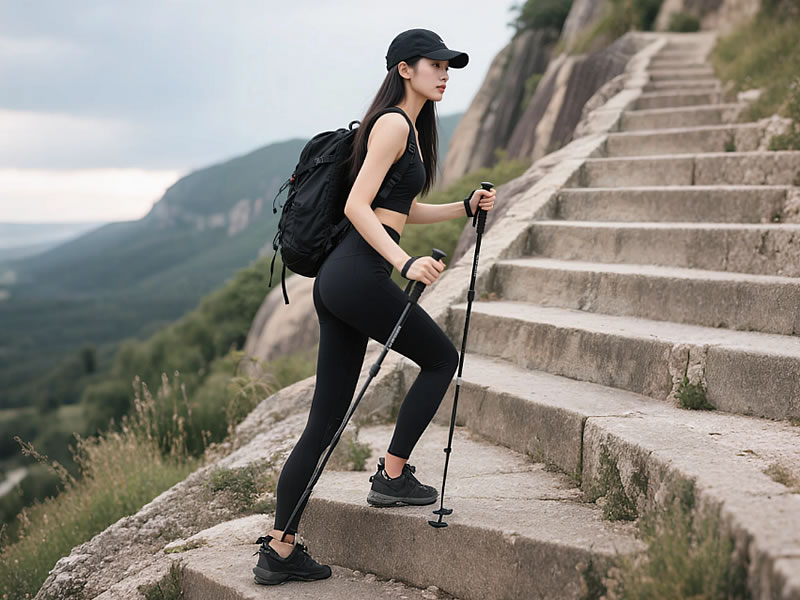How to use a walking stick on stairs safely?
Navigating stairs with a walking stick requires specific techniques to prevent falls and reduce joint strain. Whether ascending or descending, this evidence-based guide covers proper methods, common mistakes, and expert recommendations for maximum safety.

1. Essential Pre-Stair Checks
Before approaching stairs:
- Inspect Your Stick: Ensure the rubber tip is secure and not worn
- Test Locking Mechanisms: Confirm telescopic sticks are fully tightened
- Clear Your Path: Remove tripping hazards like loose rugs or clutter
- Wear Proper Footwear: Non-slip soles with good tread are critical
2. Ascending Stairs: Proper Technique
"Up with the Good" Rule:
- Hold the handrail with your free hand
- Place your stronger leg on the step first
- Push down through the handrail and stick simultaneously
- Bring your weaker leg and stick to meet the stronger leg
- Pause to regain balance before continuing
Why This Works:
- Allows your stronger muscles to do the lifting
- Maintains continuous three-point contact
- Reduces strain on weaker joints by 40% (Journal of Rehabilitation Medicine)
3. Descending Stairs: Safe Method
"Down with the Bad" Rule:
- Position the stick slightly ahead on the lower step
- Move your weaker leg down first with the stick
- Slowly lower your stronger leg to the same step
- Keep slight forward lean to maintain center of gravity
Key Benefit:
- The stick bears weight before your weaker limb
- Prevents uncontrolled descent that could cause falls
4. Special Staircase Situations
- Spiral Stairs: Use the inside hand for the rail, shorten stick for tighter turns
- Outdoor/Icy Steps: Add ice pick attachment or carbide tip
- No Handrails: Use two sticks in "tripod" formation for stability
- Carrying Items: Use backpack, never sacrifice hand placement
5. Top 3 Walking Sticks for Stair Safety
- Drive Medical Folding Cane with Quad BaseWide base prevents tipping on step edgesQuick-release fold for storage
- Hugo Mobility ElevateOffset handle reduces wrist strain during liftsGlow-in-the-dark tip for low-light visibility
- LEKI Cressida FX CarbonAnti-shock spring absorbs step impactErgonomic grip for sweaty palms
6. Common Mistakes to Avoid
❌ Leaning Backward: Shifts center of gravity dangerously
❌ Skipping Steps: Increases fall risk by 60% (CDC data)
❌ Looking Down: Causes forward head posture and imbalance
❌ Rushing: Each step should take 2-3 seconds
7. Balance Exercises for Stair Confidence
Practice these on flat ground first:
- Single-Leg Stands: Builds strength for the "up with good" motion
- Heel Raises: Improves calf power for controlled descent
- Step Taps: Trains weight shifting between legs
8. When to Ask for Help
- If stairs cause dizziness or severe pain
- When managing more than one flight
- While recovering from recent surgery
Expert Tip: "Always approach stairs at a 90-degree angle - sideways movements on steps account for 34% of cane-related falls." - Dr. Emily Sanders, Falls Prevention Specialist
Final Checklist:
✔ One step at a time
✔ Three points of contact (stick + rail + one foot)
✔ Regular equipment checks
✔ No distractions while climbing






